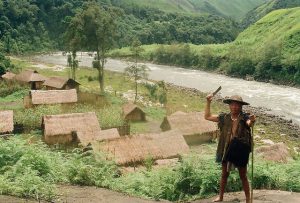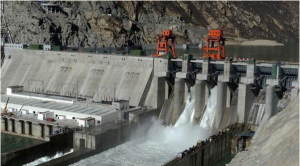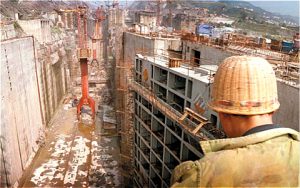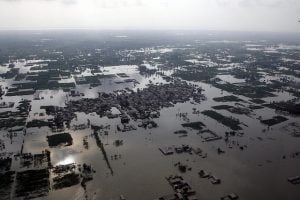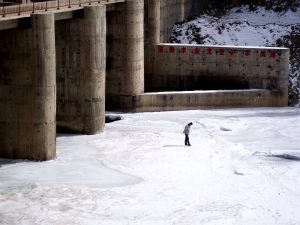Since the turn of the century, Sinohydro has become the world’s dominant dam builder. The company is engaged in an ongoing dialogue with International Rivers, and prepared a strong environmental policy framework in 2011. Yet Sinohydro is now considering building the Don Sahong Dam, which would threaten a vital fish migration path on the Mekong, and other highly destructive dam projects. The world’s biggest hydropower contractor is at a crossroads.
Sinohydro is the Chinese government’s most important contractor for hydropower projects at home. With at least 122 international projects, the company has also become the face of Chinese dam building overseas. Sinohydro has invested in dams like Kamchay (Cambodia) and the Nam Ou cascade (Laos), and supplied equipment to projects like Merowe (Sudan) and Coca Codo Sinclair (Ecuador).
Early progress…
International Rivers believes that leading global actors must follow leading global standards. On this premise, Sinohydro and International Rivers started the first ever dialogue between a Chinese overseas investor and an international advocacy group in July 2009. Since this time, we have regularly alerted the company about problems with projects in their pipeline, and have made specific recommendations for a strong environmental policy.
As an early sign of progress, Sinohydro approved a Policy Framework for Sustainable Development with high standards in 2011. The company committed to following the World Bank safeguard policies as a baseline. In addition, the policy framework ruled out projects in nationally and internationally protected areas, recognized the right of indigenous peoples to free, prior informed consent regarding projects in their territories, and committed to setting up mechanisms for the prompt resolution of community grievances.
With its sustainable development framework, Sinohydro expressed an ambition to become a leading global actor in the dam building sector. Since 2011, however, we have seen long delays in the effective implementation of the new commitments. The company, which consists of numerous holdings and subsidiaries, underwent a lengthy restructuring process and eventually merged with other state-owned enterprises to form Power China, a corporate giant with more than 200,000 employees.
… and backsliding?
Sinohydro has repeatedly confirmed that it will follow its sustainable development framework in specific projects, and agreed with its publication in our guide to China’s overseas dam industry. In August 2013 Sinohydro even withdrew from the Agua Zarca dam project in Honduras over land conflicts and serious human rights violations, conflicts which the company considered “unpredictable and uncontrollable”.
To this day, Sinohydro has however not published the sustainable development framework which it prepared in 2011. Instead in June 2014 the company adopted new Sustainable Development and Ethics Policies, which are considerably weaker than the previous framework. As we explain in a separate briefing paper, the new policies take a strong stance against corruption, but make only vague commitments to environmental protection and community relations.
In a meeting with International Rivers, Sinohydro managers argued that their company preferred to under-promise and over-deliver. They are currently preparing 22 internal guidelines, which they said would be stricter than the formal policy. Yet while the guidelines will be shared with International Rivers, the company does not intend to publicise them.
Sinohydro currently considers building a series of projects that illustrate why clear standards are essential for responsible international dam builders. The company may invest in the Paklay Dam on the Mekong mainstream and the Stung Cheay Areng Dam in Cambodia, and take up contracts for the Patuca III Project in Honduras. It is also already undertaking preparatory work on the Don Sahong Dam site, another Mekong mainstream project, on behalf of Malaysian investor, the Mega First Corporation.
Cambodia’s remote Areng Valley is a refuge for 40 threatened and endangered species, including rare elephant, bear, leopard and crocodile species. The proposed dam would flood 200 square kilometers of forest, including nationally protected areas. The local indigenous people strongly object to the project, and have repeatedly blocked the road to the site. Stung Cheay Areng ranks high in environmental impacts but low in economic value among the dams proposed in Cambodia. Two other Chinese companies dropped the contentious project in the past.
The Don Sahong Project is located at the spectacular Khone Falls in Southern Laos. For a mere 260 megawatt of power generation capacity, the dam would block a fish migration canal on the Mekong mainstream, which sustains the world’s most important inland fisheries. It would also threaten a rare habitat of the endangered Irrawaddy Dolphin. Sinohydro considers building the project for a Malaysian investor, the Mega First Corporation.
Sinohydro’s choice
International Rivers takes a long-term perspective on our dialogue with Sinohydro. We understand that bringing about change in a company with dozens of subsidiaries and hundreds of thousands of employees takes time. At the same time, Sinohydro has by now had many opportunities to learn about the social and environmental impacts of its projects on the ground.
Five years after starting an environmental policy dialogue, three years after preparing strict social and environmental commitments, projects like Stung Cheay Areng have become test cases. Sinohydro can prove that it values its reputation and its role as an ambassador of the Chinese state more than the short-term profits of a destructive contract. Or it can tell the world that it is prepared to build projects even if they clearly violate international standards and other dam builders have walked out from them.
The Patuca III Dam hasn’t started yet due to financing problems, Paklay and Don Sahong have been halted for now, and Stung Cheay Areng is only at the feasibility stage. Sinohydro can still fully assess the risks of these projects and make the right choice. Should it decide to go forward with destructive projects in Cambodia and elsewhere, strong local and international campaigns will demonstrate that today, every company needs a social license to operate, and environmental risks can turn into business risks very quickly.
